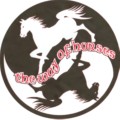
THE WAY OF HORSES |


Copyright © thewayofhorses
Eleanor
Richards |
Antioxidants - The Body's Special Forces By Eleanor Richards Copyright @ 2005 They are the Special Forces within your horse's body. They neutralize insurgents before damage can be done. They are the Antioxidants; defenders of the healthy horse! Moving throughout your horse are damaged molecules called free radicals. These molecules were corrupted by drugs, chemicals, preservatives and other impurities introduced to your horse via oxygen (air). The free radicals are electrically imbalanced and attack healthy body tissues. They steal fat, protein, DNA and electrical charges from the healthy cells. This creates a chain reaction; spreading havoc throughout your horse's body. Continuous damage to healthy body tissues results in increased risk of infection, inflammation and fatigue. As a horse ages these problems become more apparent as the free radicals increase in numbers. Performance horses, horses fighting chronic illness and horses under stress are also prime targets of free radicals. Enter our heroes - The Antioxidants. Antioxidants help prevent the spreading of free radicals. They stop the chain reaction. Antioxidants "sweep up" the insurgents. Members of the Antioxidant Special Forces are vitamins A, C, E; the minerals - selenium and zinc; and lipoic acid. Antioxidants are provided to the horse through diet and a few are manufactured (synthesized) by the horse. Offering a balanced diet to your horse will generally provide the needed antioxidants. This diet should include plenty of fresh high quality forage and a commercial product designed to compliment that forage. If the forage and grain being offered are of poor quality a vitamin/mineral supplement may be needed; but only if you are sure the nutrients are deficient. Vitamin A is present in fresh pasture and top quality alfalfa hay. Grass hay and raw grain (oats, corn, barley and wheat) do contain some levels of vitamin A, but not enough. If your horse does not have access to fresh pasture or alfalfa hay a commercial product should be provided that contains sufficient amounts of the vitamin. Over-supplementing with vitamin A can create a toxic situation. The upper-safe limit for a 1,100-pound horse is 80,000 IU (International Units) per day. You must read labels and calculate how much vitamin A your horse is receiving if you are feeding many products that contain high levels of the vitamin. The average recommended amount of vitamin A for a 1,100-pound horse is around 30,000 IU per day. Vitamin C is provided by fresh leafy green forage. Healthy horses can also synthesize their own vitamin C. It is a concern that senior horses may not be able to produce vitamin C internally as well as younger horses. Vitamin C is not toxic if over-supplemented. Large doses can cause stomach up-set and interfere with the absorption of vitamin B-12. Four and one half grams per day of vitamin C is the recommended level for a 1,100-pound horse. The best source of Vitamin E is raw unprocessed or cold processed vegetable oil. Cooking oil purchased from the grocery store has been stabilized, which destroys the vitamin E. Grain, hay and grass contain vitamin E. But during storage or processing (rolling, crimping, crushing, etc.) the vitamin breaks down. Commercial feed manufactures add vitamin E to their rations. If you decide to supplement vitamin E chose a product from a reputable manufacturer and follow the directions. Selenium is available in the forage and grain if the geographical area contains sufficient amounts in the soil. Unfortunately many parts of the country are deficient - including northeast Ohio. Commercial feed manufactures have taken the selenium deficiencies in to consideration when formulating rations. If a good quality product is offered…and fed at the recommended feeding rates stated on the feed tag… the horse should meet his requirements. Selenium can be toxic if over-supplemented. 3.3 mg/kg of diet can produce toxicity. Be aware of the amounts you are offering your horse if several supplements are being fed. Zinc is available to the horse via grain, hay and pasture. But not at the levels needed to meet NRC (National Research Council) recommendations. Commercial feed manufactures add zinc to their rations. If the product is fed according to the feeding recommendations the zinc requirements will be met. Premium feeds designed for the performance or reproduction horse will be well fortified. Zinc has a low risk of toxicity. But high levels can interfere with the absorption of copper. A ratio of 3 parts copper to 1 part zinc is recommended. If you decide to add a supplement make sure you chose one that is balanced. Lipoic acid is synthesized by the horse. Some commercial supplements designed for the performance horse will contain lipoic acid in the formula. Supporting the Antioxidant Special Forces by providing a balanced diet and feeding according to the directions is important to your horse's heath. With your help the insurgents can be kept under control. * Proper nutrition and management practices can prevent many problems associated with caring for horses. You can learn how to provide your horse with a better life-style by taking the online course "How to Feed for Maximum Performance" taught by Eleanor Richards. Go to www.horsecoursesonline.com for more information. Contact Eleanor at elrichards@thewayofhorses.com or (440) 554-3714 |